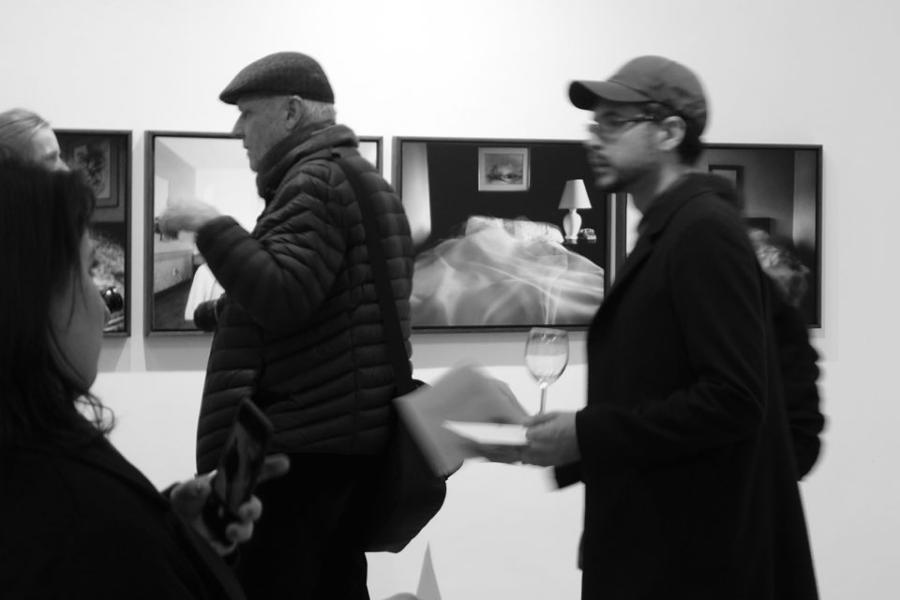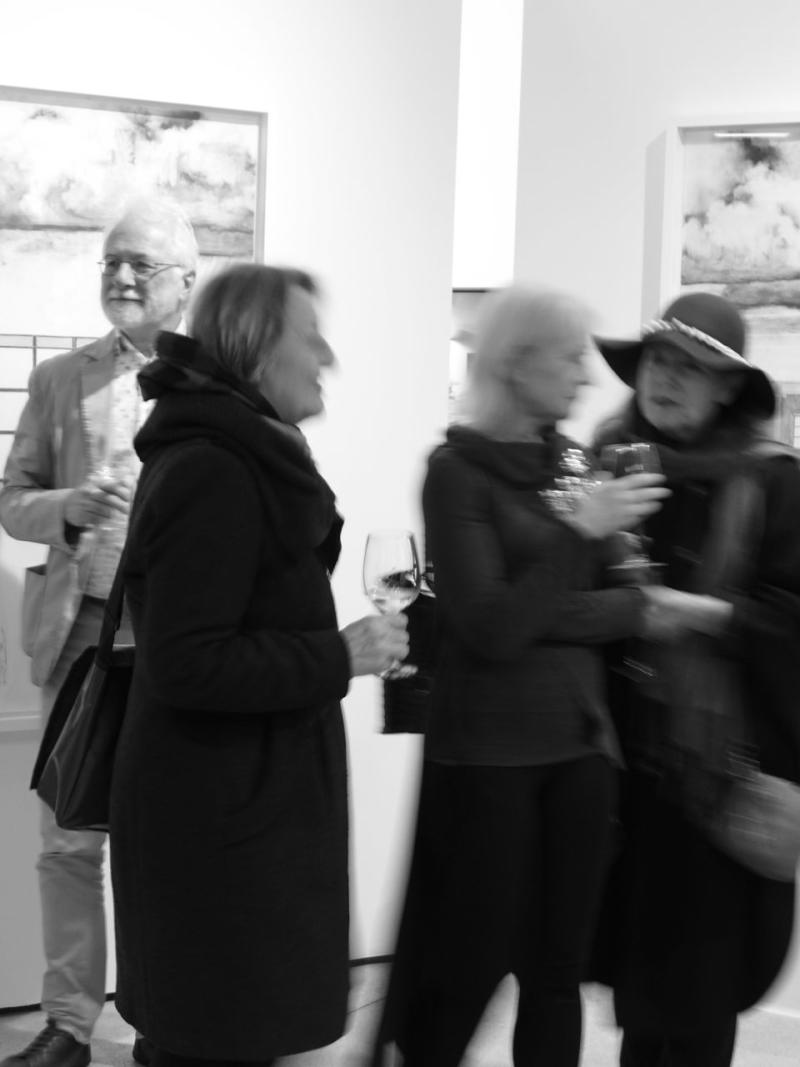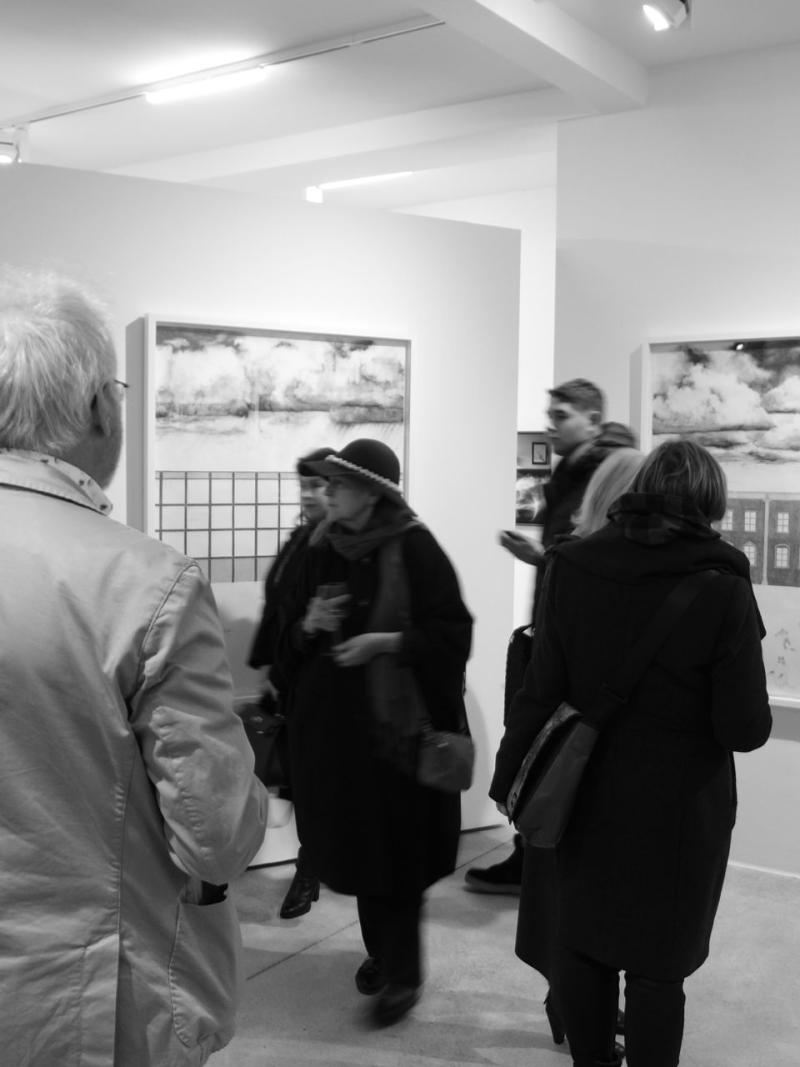Loft 8 - The Storm is Blowing from Paradise
 Vernissage "The Storm is Blowing from Paradise" (c) findART.cc Foto frei von Rechten. - Mit freundlicher Genehmigung von: loft8
Vernissage "The Storm is Blowing from Paradise" (c) findART.cc Foto frei von Rechten. - Mit freundlicher Genehmigung von: loft8Wer: Loft 8 Kunstraum
Was: Ausstellung
Wann: 06.11.2019 - 22.11.2019
Wo: Wien, Österreich
The eyes do not see in fact. From the physic’s point of view, the eye is just a receptor for the electromagnetic waves of visible light, a tool that provides stimuli, information to the brain and combines two images into one. It "flips" and records it in the brain. However, the question remains, whether the world as we see it, is a world that exists, or is it only made up of our perceptual abilities? The created structure defines and determines our functioning or what seems to be particularly clear, mandating us to exist in a certain way. As we define the order tighter and more precise, we assign and produce systems, which lead to us leaving less and less space for unloading collective energy, passions, social antagonisms, and weaknesses. This causes the form to be overwhelming and overloaded.
It came a point that we put our trust into the eye of the camera, devoid of selective view. We gave up our individual awareness. Perceptions replace technical parameters. The picture is still, unmoving. It is only an interpretation, reminiscent of the eye of the arthropods. Each part of their eye is actually a separate, “mini-eye" having its own lens focusing the light on a single receptor. It seems that the technology, the eye of the camera has become our external receptor. We live in a world where only "one percent" of what is happening becomes visible, the rest remains in the dark. However, this darkness is not always dark. It is also a passive zone, allowing us to be an observer. It is a massive symbol of "one percent" in culture networks, allowing you to yield and to absorb the outside world. It permits one to become invisible and rest or hideaway from the daily frustration. It does not mean the darkness is wrong, but only that the darkness gives one rest, permits to retire and rejuvenate. One needs as much light as the protection of the darkness to function.
So you can paraphrase the theory of "one percent", assuming that these proportions, seem to protect us from overloading us with the complex picture of the world, that exists. The sensitivity of the eye increases in the dim light and at the same time, it is protected from excessive exasperation in the bright light. Looking back at the partial image, one can sense that there is more to it. To summarize, the world we created and became familiar with is loosing its grip and our paradise no longer protects us. The storm is brewing and is coming from the paradise.
Ewa Zasada
Tags: Grafik, Malerei, Zeitgenössische Kunst Vernissage "The Storm is Blowing from Paradise" (c) findART.cc Foto frei von Rechten. - Mit freundlicher Genehmigung von: loft8 /
Vernissage "The Storm is Blowing from Paradise" (c) findART.cc Foto frei von Rechten. - Mit freundlicher Genehmigung von: loft8 / Wer: Loft 8 Kunstraum
Öffnungszeiten: Di-Fr 13-18h, Sa 10-15h
Venue: Loft8, Galerie für zeitgenössische Kunst, Radetzkystraße 4, 1030 Vienna Exhibition Opening: Wednesday, 6 November 2019, 7pmCo-Curators: Pawel Mendrek and Ewa ZasadaDuration: 7 November – 21 December 2019Opening hours: Tuesday - Friday 1 - 6 pm, Saturday 10 am – 3 pm and by appointmentFree entrance
 Vernissage "The Storm is Blowing from Paradise" (c) findART.cc Foto frei von Rechten. - Mit freundlicher Genehmigung von: loft8 / Loft 8 Kunstraum
Vernissage "The Storm is Blowing from Paradise" (c) findART.cc Foto frei von Rechten. - Mit freundlicher Genehmigung von: loft8 / Loft 8 Kunstraum Vernissage "The Storm is Blowing from Paradise" (c) findART.cc Foto frei von Rechten. - Mit freundlicher Genehmigung von: loft8 / Loft 8 Kunstraum
Vernissage "The Storm is Blowing from Paradise" (c) findART.cc Foto frei von Rechten. - Mit freundlicher Genehmigung von: loft8 / Loft 8 Kunstraum Vernissage "The Storm is Blowing from Paradise" (c) findART.cc Foto frei von Rechten. - Mit freundlicher Genehmigung von: loft8 / Loft 8 Kunstraum
Vernissage "The Storm is Blowing from Paradise" (c) findART.cc Foto frei von Rechten. - Mit freundlicher Genehmigung von: loft8 / Loft 8 KunstraumCopyright © 2025 findART.cc - All rights reserved












